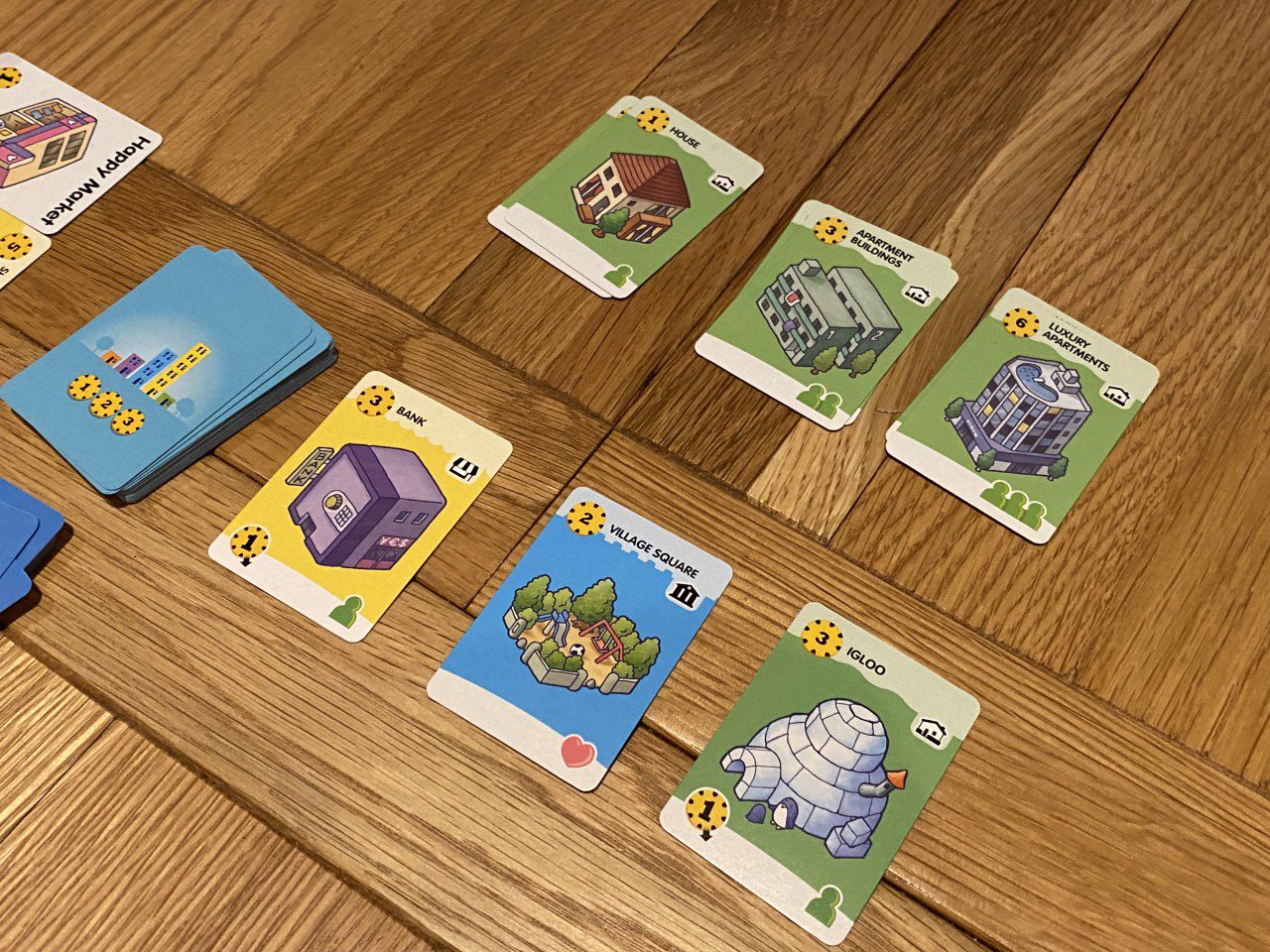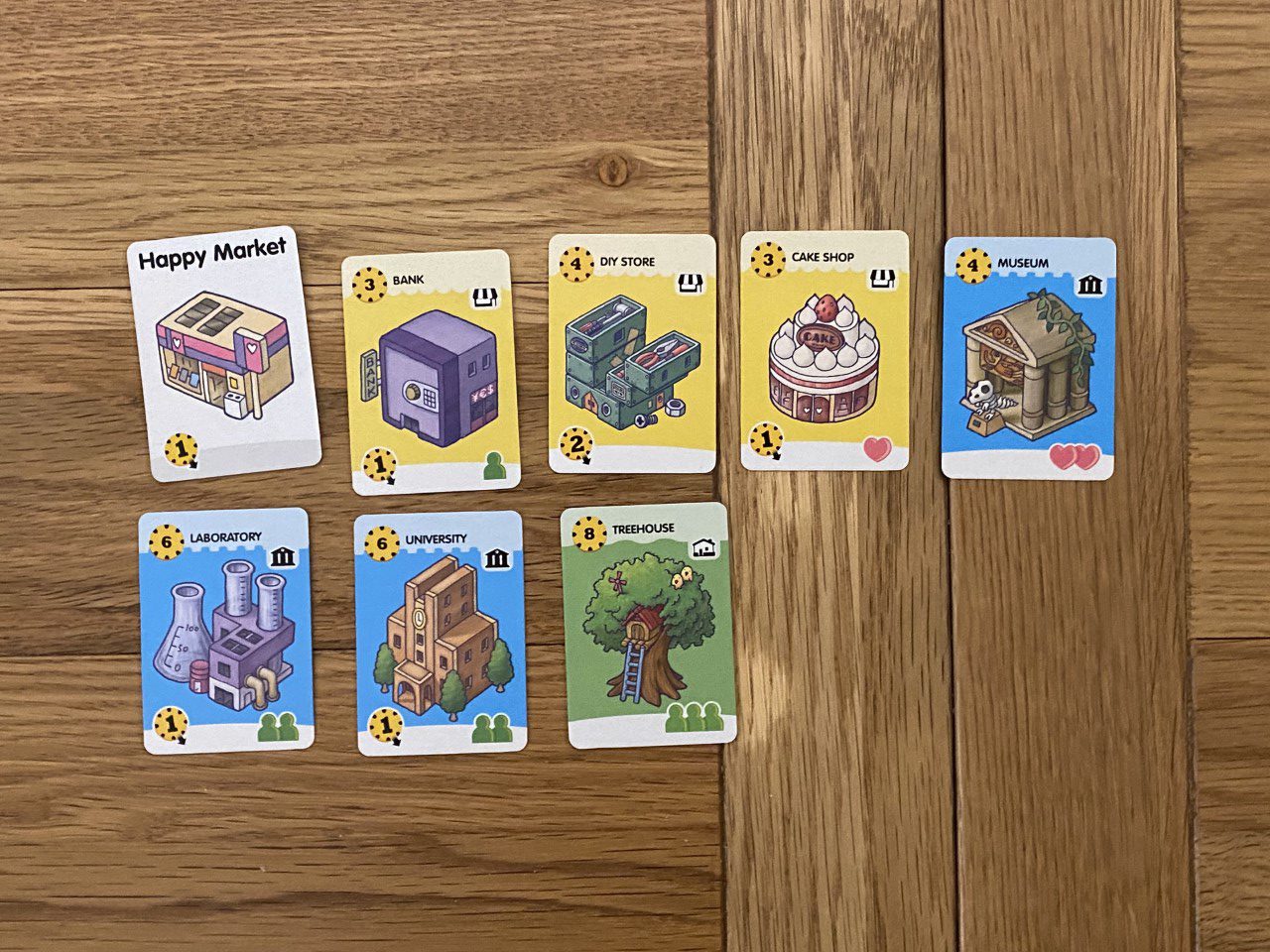Happy City is the small box city builder that has universal appeal
How do you define a happy city? Is it the number of shops and banks a city has? Is it the public spaces; the parks and libraries? Or is it access to work via industrial and commercial districts? In Happy City, you’ll balance these decisions as you earn income and expand your city over the course of several turns. But choose wisely, because in Happy City, you have no more than ten buildings – and the winner is the player with the most happiness calculated as people multiplied by hearts, but more on that in a second.
Happy City is a very small-box game published in the UK by Coiledspring, and is now available worldwide having initially been released in Japan. The Eastern influence is obvious thanks to cutesy cartoon visuals and thematic buildings that are more focused on exciting younger players than having a practical purpose in any would-be city. I’m looking at you “Unicorn Petting Parlour” by the way…

That’s fine though because Happy City is a perfect game for young players thanks to the inclusion of a Family Mode and an Expert Mode — the former of which works well with my children who are five and seven. There is very little reading required in Happy City, but a basic grasp of addition, subtraction and multiplication is necessary — and I found that the level was just right for kids of the ages above.
The key difference between Family and Expert modes simply comes down to the conditions you’ll need to meet to add certain special buildings to your city — and there’s a deck of cards for each variant. The Expert variant does have more detailed writing on the cards, but it doesn’t add loads of complexity to the game itself — more really just the ability to assess how to access the cards on display.

I mentioned earlier that the winner in Happy City is the player with the most points achieved by multiplying population (represented by little green people) and happiness (represented by hearts). Most low level buildings add perhaps just one heart or population, or they may even add none, but instead give the player income. There are some buildings (but not loads) which might add population and income, but decrease happiness, which is a further nuance.
As players move up the three tiers of buildings available (each categorised by how much they cost to add to a city) they will find more and more interesting options. Buildings might add multiple hearts or population, and may even add income as well. Others add loads of hearts and population, but decrease income. Despite all of these ups and downs it’s easy for players — even young ones — to assess the situation at a glance thanks to the fact that each city can only have one “special” building (which can be taken once you have building tags to match it elsewhere in your city) and the placement of a tenth building triggers the end game.

This means that Happy City is over in about fifteen to twenty minutes regardless of the player count, and it works perfectly for the attention span of young players. On the downside, it leaves relatively little room for long-term strategising — you’ll simply aim for income generating buildings early on, then focus on your happiness and population from the mid to end game. If playing the Expert variant, the special buildings do add a little more focus and complexity in scoring, but it’s nothing too groundbreaking.
Happy City has gone directly into my children’s long term keep pile and we’ve already played it about forty times. This, alone, makes me feel that Happy City is well worth a look if you are buying for family gamers below ten years old. For players over that age, Happy City will increasingly fall into the “filler” or “travel game” categories, but it’s still good fun because it looks great, offers a clear challenge and never overstays its welcome.

You can grab a copy of Happy City at your friendly local game store, or you can find the best price online via BoardGamePrices.
Comments are closed.